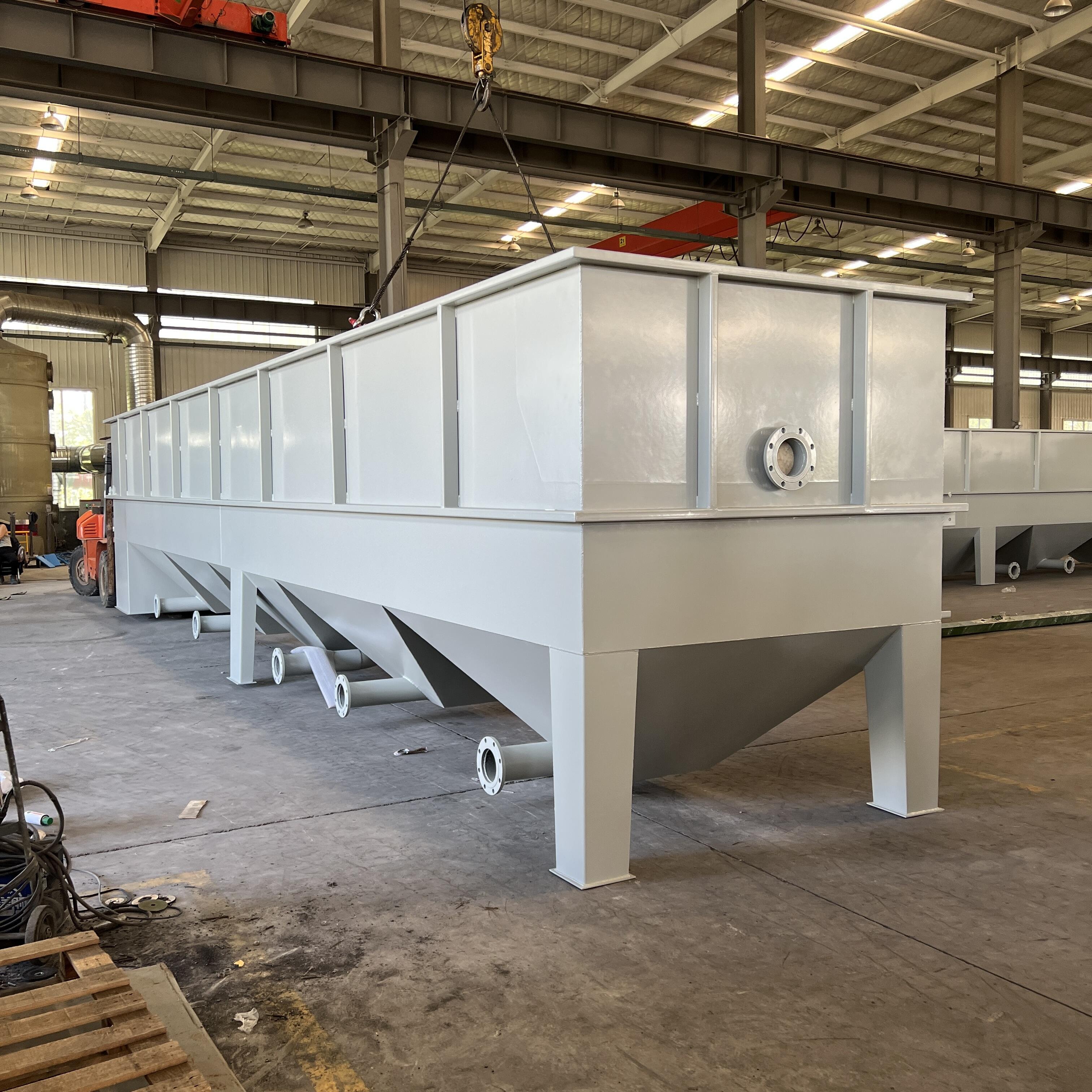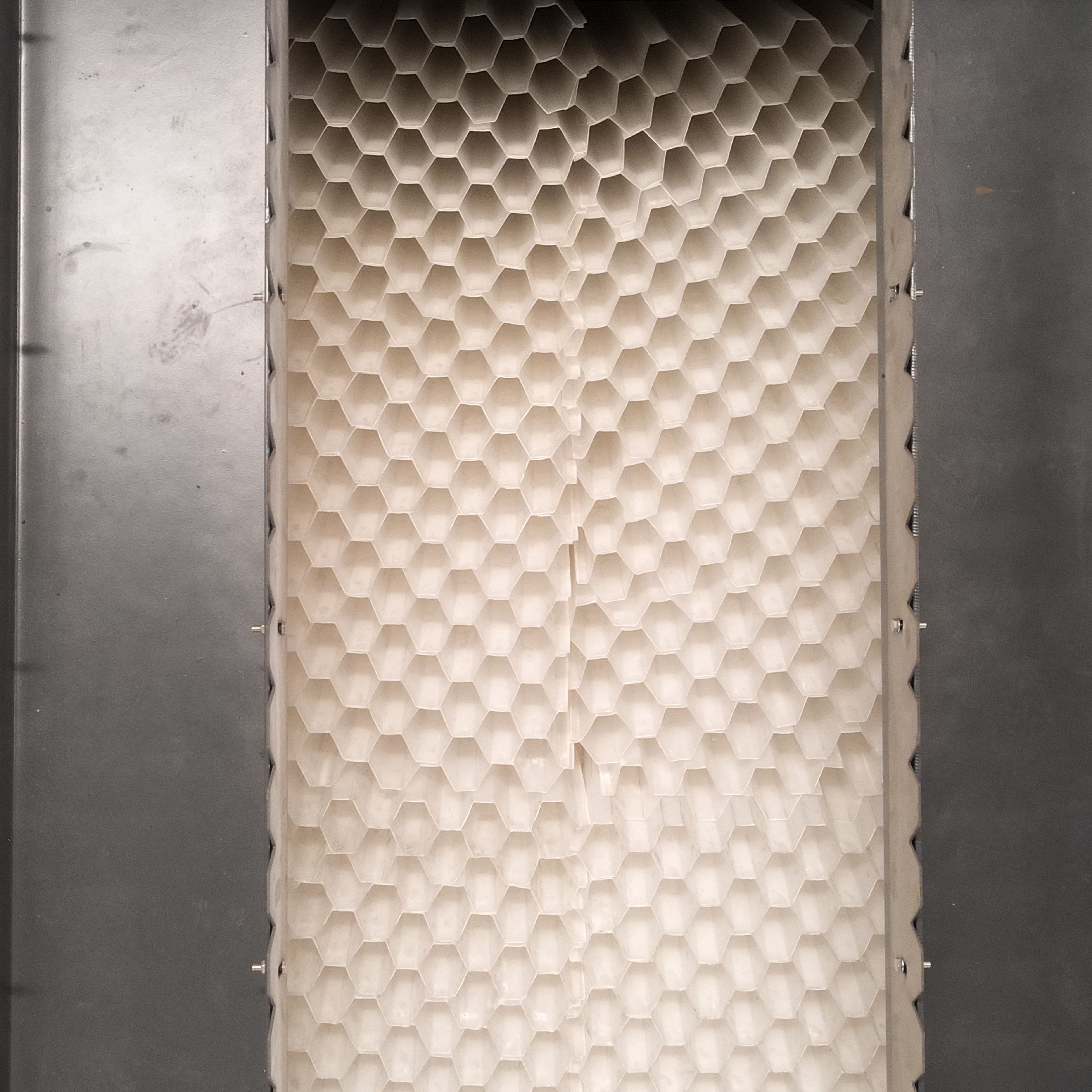1.Design water quality and flow
(1)Design water flow
The design project is for wastewater average hourly flow Qave=36m3/h,the outlet water dis
(2)Design water Quality
Effluent Quality and Design Standards Based on Client-Provided Data:
|
Item |
Influent water quality(mg/l) |
Effluent water standard(mg/l) |
|
PH |
6.5-9.0 |
6.5-9.0 |
|
TSS |
500-1000 |
5 |
|
Fe |
20-60 |
1 |
|
Mn |
20-60 |
1 |
|
Escherichia coli |
10^7MPN/100ml |
100 MPN/100ml |
Collecting tank---Aeration tank---Flocculation tank ---Lamella clarifier tank---Middle water tank--- Sand and Carbon multimedium --- Iron and Manganese Removal Filter---UV disinfection---Discharge or reuse
1. Collecting Tank:
- Role: Collects and stores raw water, providing a stable source for subsequent treatment steps. It helps balance water flow, ensuring stable operation of later treatment equipment.
2. Aeration Tank:
- Aeration causes the iron (Fe²⁺) and manganese (Mn²⁺) in the water to react with oxygen in the air and convert into rust (Fe³⁺) and manganese oxide (MnO₂) that are insoluble in water. These oxides form precipitates.
3. Flocculation Tank:
- Role: Flocculants are added to the water to form larger flocs from suspended particles and pollutants. Mixing helps aggregate smaller particles into larger ones, making them easier to remove in subsequent sedimentation or filtration processes.
4. Lamella Clarifier Tank:
- Role: Uses inclined plates to improve sedimentation efficiency, allowing flocculated particles to settle out of the water. Clear water exits from the top, while settled sludge is removed.
5. Middle Water Tank:
- Role: Collects water that has undergone preliminary treatment in the lamella clarifier. It typically stores and balances water flow, ensuring stable operation of the subsequent treatment steps.
6. Sand and Carbon Multimedium Filter:
- Role: Uses layers of various media (such as sand and activated carbon) for filtration, removing suspended particles, particulate matter, residual chlorine, and some organic substances to improve water quality.
7. Iron and Manganese Removal Filter:
- Role: Specifically designed to remove iron and manganese from the water through oxidation and precipitation reactions, preventing discoloration and sediment formation in the water.
8. UV Disinfection:
- Role: Uses ultraviolet light to kill pathogenic microorganisms in the water, such as bacteria, viruses, and protozoa, ensuring water safety.
9. Discharge or Reuse:
- Role: The treated water can be discharged (e.g., into natural water bodies) or reused (e.g., for industrial purposes, agricultural irrigation) based on needs, achieving water conservation and environmental protection goals.
Each step is designed to progressively improve water quality, ensuring that the final water meets the required standards for its intended use.
lamella clarifier
Inclined tube precipitator can not only be used as set equipment for air float, lift and other water processes, but also can single-stage treatment of various sewage for example. As we all know, the inclined tube sedimentation tank is widely used in sewage treatment engineering because of the advantages of high sedimentation load, good effect and small occupation area. Many dense inclined tubes or inclined plates are set in the settlement area, so that the suspended impurities in the water can be precipitated in the inclined plate or inclined tube. The water flows upward along the inclined plate or inclined tube, and the separated sludge slides down to the bottom of the pool under the action of gravity along the inclined plate (tube), and then is concentrated and discharged


Iron and Manganese Removal Filter
An iron and manganese removal filter is a device used for water treatment, primarily designed to remove iron, manganese, and other metal elements from water. It is commonly used in residential, industrial, and drinking water treatment systems to improve water quality and extend the lifespan of equipment. Here are some key points about iron and manganese removal filters:
1.Working Principle: Iron and manganese removal filters typically use oxidation-reduction reactions to remove iron and manganese. The iron and manganese react with oxidizing agents to form insoluble oxides, which are then removed by the filter media.
2.Filter Media: Common filter media include catalysts (such as manganese dioxide), sand, or specialized composite materials. Different media have varying treatment capacities and lifespans.
3.Installation Location: The filter is usually installed on the pipeline where the water source enters, ensuring that the treated water quality is optimal.
4.Maintenance and Care: Regularly check and replace filter media, and clean the media in the system to ensure proper operation and long-term effectiveness.
5.Application Range: Iron and manganese removal filters are suitable for treating groundwater or well water with high levels of iron and manganese. They can significantly improve water quality and prevent sediment and scale formation.


Copyright © Qingdao Yimei Environment Project Co., Ltd. All Rights Reserved Privacy policy